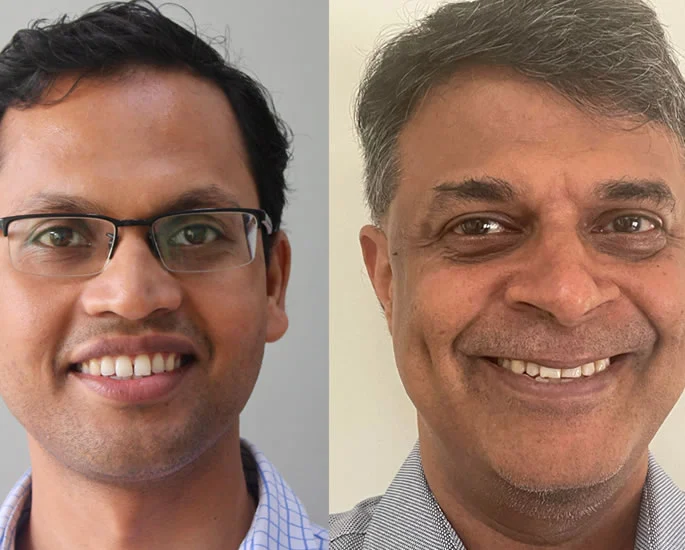Chatbots are at the forefront of the AI industry’s race to adapt to India’s diverse array of languages.
Global tech giants and local start-ups alike are vying to capture lucrative new markets by tailoring their chatbots to the country’s myriad languages and specific industry needs. India’s linguistic diversity is vast, with the People’s Linguistic Survey of India saying that approximately 780 languages are spoken across the nation.
Additionally, the 2001 Census of India identified 122 major languages, of which 22 are officially recognised. The likes of Microsoft and Google are leading the charge by developing AI voice assistants and chatbots that support languages including Hindi, Tamil, Bengali, Marathi and Telugu.
Their efforts aim to enhance user engagement and accessibility for millions of non-English speakers. Local start-ups are also making significant strides in this area.
Sarvam AI, backed by Silicon Valley investors, and Krutrim, founded by Bhavish Aggarwal of the Indian mobility group Ola, are creating AI solutions that cater to regional languages and dialects. These tools are aimed at fast-growing Indian industries, such as the country’s large customer service and call centre sector.
Google launched its Gemini AI assistant in nine Indian languages, supporting Bengali, Gujarati, Hindi, Kannada, Malayalam, Marathi, Tamil, Telugu and Urdu. Meanwhile, Microsoft’s Copilot AI assistant is available in 12 Indian languages.
The company is also working on other projects tailored for India. This includes building “tiny” language models at its Bengaluru-based research centre. These smaller alternatives to Large Language Models (LLM) can run on smartphones rather than the cloud.
This makes them cheaper and potentially better suited to countries such as India where connectivity can be limited. Puneet Chandok, President of Microsoft for India and South Asia, said the company wants to “make [AI] simple and easy to use and get it to the hands of all these customers and partners”.
He said that this involved “contextualising it for the Indian context, making it more relevant, more precise”. Microsoft is also partnering with Sarvam AI.
Founded in 2023, the company is developing a “full stack” of generative AI tools for Indian businesses. The start-up has raised $41 million from investors including Peak XV and Menlo Park-based Lightspeed Venture Partners.
Lightspeed partner Hemant Mohapatra said investing in local AI companies was becoming more important as governments seek to develop “sovereign AI” that is trained and stored within their borders. He said: “The AI supply chain is beginning to fragment.
“If you’re training a foundation model in India on Indian citizen data, audio, video, text, different languages, then it has to be an Indian company, focused on Indian use cases, Indian-domiciled, Indian founders and so on.” India’s AI race does not involve building LLMs from scratch in order to compete with the likes of OpenAI.
Investors argue the resources and capital required would be too much to make sense. Instead, the likes of Sarvam AI are focusing on adapting existing LLMs for Indian languages and using voice data instead of text.
This makes them more effective in a country where many prefer to communicate through audio messages rather than in writing. Lightspeed partner Bejul Somaia said: “There’s still a massive gap between these underlying models and real-world use cases in countries as complex as India.
“In a market like India, you’re going to need to have a little bit of an ecosystem that springs up to enable companies to use the underlying model capabilities.” Tanuja Ganu, a manager at Microsoft Research in Bengaluru, said an additional benefit of testing new technologies and tools in a country of India’s size and diversity was that they could be exported elsewhere.
She said: “It’s using India as a test bed and validating some of the technology in India and seeing how we can expand it to other parts of the world.”
The race to adapt chatbots to India’s diverse linguistic landscape is transforming the AI industry and reshaping digital experiences for millions of Indian users. The efforts of global tech giants like Microsoft and Google, alongside innovative local start-ups such as Sarvam AI and Krutrim, underscore the vast potential and lucrative opportunities within this burgeoning market.
By addressing the unique linguistic and cultural needs of India, these companies are not only enhancing accessibility and user engagement but also driving economic growth and fostering digital inclusion across various sectors. As AI technology continues to evolve, the importance of localised solutions that consider regional languages and cultural contexts cannot be overstated.
The development of smaller, more efficient language models tailored for the Indian market exemplifies how innovation can thrive in environments with connectivity challenges. Ultimately, the race to adapt chatbots to India’s languages is more than just a technological challenge; it is a vital step towards a more inclusive and connected future.
By prioritising the needs of diverse linguistic communities, AI developers are setting the stage for a digital landscape where technology serves as a bridge, rather than a barrier, to communication and progress.











